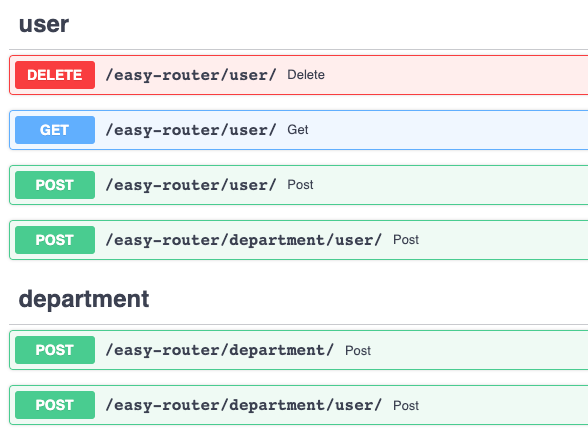fastapi-directory-routing
Create routes easily
The file system-based FastAPI router automatically generates the routing structure from the file system.
pip install fastapi-directory-routingExample Usage
Let's imagine a simple routing system where we can create users and departments, and add users to these departments.
Our route tree will roughly look like this.
/api/user [POST]
/api/user?user_id=<integer> [GET]
/api/user?user_id=<integer> [DELETE]
/api/department/add [POST]
/api/department/user [POST] # For add user to a department.
Let's create this routing system with fastapi-directory-routing
Create your file system like this.
.
└── your-amazing-app/
└── api/
├── user/
│ └── route.py
└── department/
├── user/
│ └── route.py
└── route.py
fastapi-directory-routing traverses the folder tree in the base directory (default is 'api' folder), and automatically adds all routes with the same name as the router_filename (default is 'route.py') to the router
Define your routes in route files.
To define your routes within the route files, name your functions using 'get, post, put, delete'.
user/route.py example
def get(user_id: int):
return {
"name": "John",
"surname": "Doe"
}Adding routers to the FastAPI main router.
from fastapi import FastAPI
from fastapi_directory_routing import DirectoryRouter
app = FastAPI()
easy_router = DirectoryRouter()
app.include_router(prefix="/easy-router", router=easy_router)